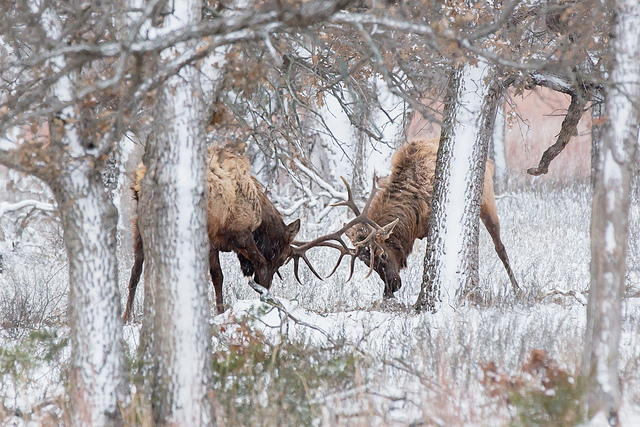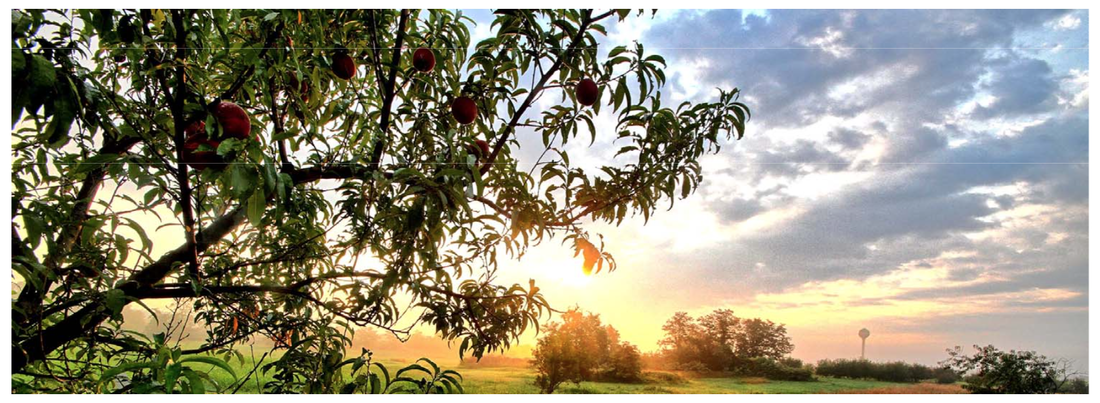|
Mechanisms regulating condition-dependent growth in the elaborate weapons of sexual selection in beetles  Figure 1. Elk in the Snow (CC 2.0 by Larry Smith) Figure 1. Elk in the Snow (CC 2.0 by Larry Smith) Some of the most charismatic and recognizable features in the animal kingdom are the impressive weapons they wield when competing with each other. Porcupine quills, the chelae of crayfish, and the antlers of elk all require an enormous amount of energy dedicated primarily to fighting their fellows for resources and mates. Most species get by with a modest arsenal; mockingbirds will pick fights over the best territory, but their beaks are hardly fearsome. For centuries scientists have studied and debated the evolutionary pressures that guide the creation of extreme biological weaponry we see in mastodons, kudu, and stalk-eyed flies1. Why do a few species develop these exaggerated armaments when most get by with beaks and jaws that can crack seeds not bones?Some of the most charismatic and recognizable features in the animal kingdom are the impressive weapons they wield when competing with each other. Porcupine quills, the chelae of crayfish, and the antlers of elk all require an enormous amount of energy dedicated primarily to fighting their fellows for resources and mates. Most species get by with a modest arsenal; mockingbirds will pick fights over the best territory, but their beaks are hardly fearsome. For centuries scientists have studied and debated the evolutionary pressures that guide the creation of extreme biological weaponry we see in mastodons, kudu, and stalk-eyed flies1. Why do a few species develop these exaggerated armaments when most get by with beaks and jaws that can crack seeds not bones? Mike Raupp selected as recipient of USM Regents' Faculty Award for Excellence in Public Service2/24/2015
The University System of Maryland (USM) Board of Regents has selected Professor Mike Raupp as a recipient of a 2015 USM Regents' Faculty Award for Excellence in Public Service. This award is the highest honor that the Board bestows and recognizes Mike's exemplary achievements in educating the public in all things entomological.
In his experiments, Rob uses a synergistic combination of BMSB aggregation pheromone (Khrimian et al., 2014) and methyl (E,E,Z)-2,4,6-decatrienoate (MDT) (Weber et al., 2014) to lure BMSB into his traps. The advantage of this technique lies in its specificity for BMSB. By using the male-produced aggregation pheromone, Dr. Morrison and his colleagues are able to selectively attract and kill the BMSB without catching other insects (such as bees present in those same orchards) in the crossfire. Since this method only targets the BMSB, the ecosystem will remain largely uninterrupted, allowing for seamless integration of these traps without fear of large-scale ecosystem repercussions. The availability of these attractants in conjunction with research looking into convenient trap designs for growers means that these strategies have real field potential. Tired of blanketing your entire orchard with gallons of pesticides in order to combat the stink bug menace? Imagine drawing the bugs to a smaller spray area in order to deliver them to an untimely, yet well deserved, end while reducing your environmental impact. Dr. Rob Morrison at the USDA definitely thinks this is possible!
Entomologist Michael Raupp has fed Jay Leno a cicada. He’s consulted the TV series “Bones” on bugs found on cadavers in the Washington, D.C., area. He’s practically a regular on NPR and WTOP. Click on link to learn more.
http://terp.umd.edu/bug-man-on-campus/ |
Categories
All
Archives
June 2024
|
Department of Entomology
University of Maryland
4112 Plant Sciences Building
College Park, MD 20742-4454
USA
Telephone: 301.405.3911
Fax: 301.314.9290
University of Maryland
4112 Plant Sciences Building
College Park, MD 20742-4454
USA
Telephone: 301.405.3911
Fax: 301.314.9290


 RSS Feed
RSS Feed




